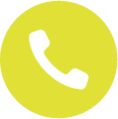Asian Hornets in the UK for the first time
Posted on 29th October 2016 at 10:55

Asian hornets decimate bee colonies - find out about Asian hornet control from All Aspects Pest Control covering Wokingham, Reading and surrounds of Berkshire.
The asian hornet had been found on the Channel island of Alderney last summer, meaning that this is the first recorded case of the asian hornet in the UK, the hornets are a major threat to bee keepers as their main prey are honey bees. This year they have spread into Gloucestershire and unless successfully checked spread across the South of England; experts believe that the north is to cold to support the Queens overwinter.
Why do asian hornets attack honey bees?
The hornets predate bee's and large insects in their native lands; in Europe they largely prey on honey bees as they have no defense. The hornets will hover outside a bee hive taking the bee's on the wing with a single hornet capable of killing 40 bee's a minute. Once they discover a bee hive they release a pheromone to attract their nest-mates and several hornets can exterminate a honey bee colony numbering in the tens of thousands within hours. Hornets can reach flying speeds of 25 MPH and can cover 60 miles a day searching for their prey.
If the hornets are so successful, how do asian bee's protect themselves?
The Japanese honey bee has developed an effective strategy to defeat the hornets; when a honey bee detects the release of the hornets pheromone they give off their own pheromone which alerts the hive and numbers of bee's gather together to attack the hornet. The bee's group around the hornet forming a tight ball, up to a hundred bee's can surround a hornet preventing it from releasing any more of their pheromone. The bee's are able to regulate their body temperature and they can increase the temperature in the ball to 46*C, they also elevate the level of carbon dioxide within the ball killing the hornet.
Detailed research into Japanese honey bee's suggests that the "I can see you" pheromone that is initially released is enough to drive off the hornet as few species engage in unprofitable conflict and the hornets go off to seek an easier prey. The european honey bee has no understanding of the hornets pheromone and is unable to understand the threat posed by the hornets.
Ok, what does the asian hornet look like?
Vespa velutina, the asian hornet is about the same size as our european hornet; 45mm in length but these have a black head and abdomen with a yellow/orange face and tail with black on the upper legs and yellow on the lower legs. It is for the reason that the asian hornet goes by the name the asian yellow footed hornet.
Are these hornets dangerous to humans?
All bee's, wasp's and hornets can be dangerous; their toxins release large amounts of an chemical called histamine in our bodies and that adverse reaction can cause people to go into anaphylactic shock. All hornets carry more poison than wasps; around 50mg and the asian hornets stinger is around 6mm long, delivering an extremely painful injection which is described as something similar to having a hot nail punched into your flesh.
If you find the asian hornet who should you report it to?
The Government has set up the non-native species secretariat and their website is www.nonnativespecies.org, don't approach the hornets but take a photograph and get in touch with them.
Tagged as: Wasps, bee's and hornets
Share this post:





